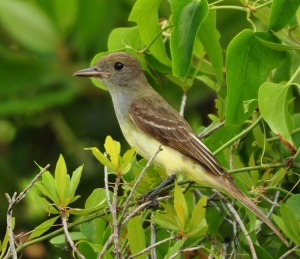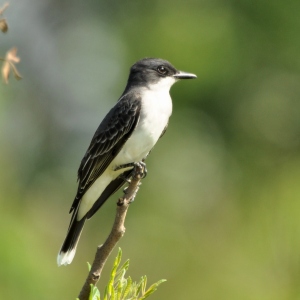Article by: Aija Konrad
Photos by: Ed Konrad
What fun it is each season to look forward to birds that are arriving on our island! This article is on Spring/Summer arrivals and in a few weeks we will have an article on Departures. It’s like a regular revolving door with all the spring comings and goings!
Since I am at Seabrook part time, I can’t tell you at this release of this article exactly what is there, but I can share with you what has been there on previous years, per my Ebird list. For those of you not familar with Ebird, it is an app that uses citizen science, via checklists, that is shared with Cornell University for their bird studies. It is also a fabulous tool that keeps all your checklists electronically on your phone/computer, so you can look back at almost exact dates when you found a particular bird or when it arrived in previous years.
I won’t go into detailed descriptions of the birds, that could be a whole article on each one. But I will give a quick description of the arriving birds, and where you might find them so you can be looking. Use a birding guide or app if you are unfamiliar with these species. These birds should all be here within the week, if not already.

Before I left Seabrook Island two weeks ago, I found a Great-crested Flycatcher. It was within 2 days of my previous year’s sightings! A good place to see and hear them is in the back part of Palmetto Lake and also on Oystercatcher Rd, just past the POA parking lot. Listen for their drawn out “weep” call.

I have heard that Painted Buntings have been seen at Camp St. Christopher, and I suspect some of you have them at your feeders. Their favorite tree by the bike rack at the POA boardwalk, but this tree blew over in Matthew. I suspect they will still be in that area and on the top of the wax myrtle going out to the beach. Listen for their pretty, lilting song.

The Eastern Kingbird is a flycatcher that has a black head, gray body with a white belly and a distinct white edge to it’s tail. They are often found at Palmetto Lake, usually perched high in a tree or sometimes at the Equestrian Center. You might hear a sharp dzee or dzeet.

Barn Swallows have arrived at the Equestrian Center and go in and out of the stable barns. For any of you that grew up in farm country, they are easy to spot with their dark blue bodies, orange bellies and long forked tails. You might hear their constant liquid twittering and chattering.
Two warblers that spend the summers with us at Seabrook are the Northern Parula and the Yellow-throated Warbler. The Parula has a buzzy rising trill and you can hear them all over Seabrook Island Rd if you drive with your windows open. The Yellow-throated has a song that sounds like “sweet, sweet, sweeter than sweet” and is usually found high in trees. We’ve seen them in the live oaks in front of the Lake House. They often nest in clumps of Spanish moss.
The answer to Friday’s “Who am I” question is the Orchard Oriole. The male has a pretty rusty and black body, and the female is greenish-yellow. It has a pretty warbling song, it’s call is a sharp whistle and it also has a scolding chatter. It is often found near the first pond on Jenkins Point (listen for it’s chattering scold) and sometimes in the Bobcat Dune boardwalk area.

The Red-eyed Vireo is a summer resident and it can be elusive and hard to spot. You will always hear it, but it can be a real stickler to find. It’s very plain olive in color with a dark eye line, and it’s call sounds to me like it is counting cars..”forty-one, forty-two, forty-three.” Or some people say it’s saying “here I am, in the tree, look up, you can’t see me.” It sings at about 1 phrase, every 2 seconds.

The Blue Grosbeak male is dark blue with orange wing-bars and the female is a plain light brown. I have seen at both Jenkins Point and Bobcat Dune boardwalk. It also has a warbling pretty song. It’s call is a very metallic hard, “tink“. It perches and sings high in a tree top.
Use your bird guide or app to further study these birds, and look and listen carefully for our summer residents. Ed’s photographs are all from Seabrook and nearby hotspots. Good luck on your scavenger hunt! On a quick note, at the beach we will have the arrival of the Least Terns, Gull-billed Terns and Sandwich Terns. We will concentrate on those in another blog article.







Another well done and informative blog. We look forward to birding Seabrook Island vicariously through these blogs.
LikeLike
Osprey, red knot, mergansers, some terns
Sure there are
LikeLike
Yes on the Mergansers and some terns. The Ospreys breed and summer here. The Red Knots pass through – that’s next weeks article.
LikeLike
Baby barred owl sporting downy feathers landed by my pool at 2868 Captain Sams on Tuesday May 9. Adorable and Mama bird was hanging out near by. See photos. Thanks, Rich
[image1.jpeg][image2.jpeg][image3.jpeg]
LikeLike